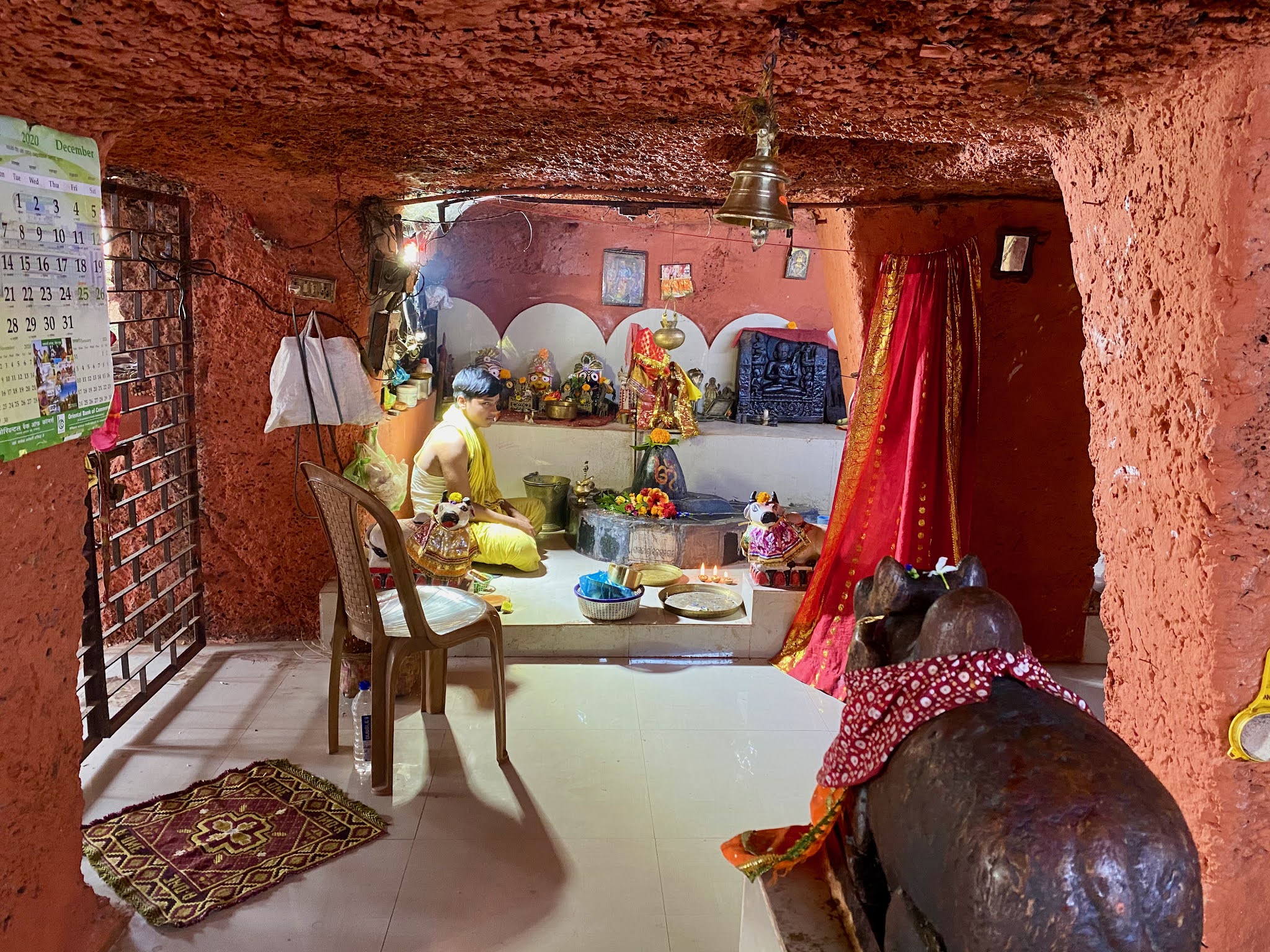T-1500 years into the valour of the last Dwapara
A chance discovery yesterday, led us to a rather impromptu visit to Panchu Pandava Caves today. It's located in Old Bhubaneswar, Odisha not far off from the more famous Rajarani Temple. A touch with the vibrations of dharma in the end of this rather remarkable year 2020. We cycled the short distance and it was an enjoyable ride along with chilly gusts of a pleasant winter.
A signboard by Odisha Tourism at the entrance, dates the monument between 500 & 600 AD.
These caves have been converted into a temple for the worship of Lord Shiva. The Pandavas are often depicted worshipping Lord Shiva in other texts. The Pandavas refer to the five Pandu brothers: Yudhisthira, Bheema, Arjuna, Nakula, Sahdeva and their wife Draupadi from the Hindu epic, Mahabharata.
There is a priestly family who serve the temple with the daily puja rituals. I met the youngest in the family and his mother. He performed a puja specific to my name and Hindu root, with clear syllables in Sanskrit. He also mentioned that the Pandavas remained here for an unknown period of time during their Agyat Vaas (12 years incognito) of their famous 13 year exile. The deep well outside, dates back to the times of their stay too.
The first partition of the temple is dedicated to Lord Shiva & the Trinity along with a statue depicting the Pandavas and their mother Kunti. The next partition depicts Goddess Durga along with a few manifestations of Divine Mother. Paramhansa Yogananda had mentioned that he was born as Arjuna during those times and his most advanced disciple Rajasi had been Nakula then. So the Pandavas are in many ways closer to the heart of many Kriya Yogis. I meditated in this cave for a few minutes, with calming vibrations of fearlessness.
Here is a closer portrait of the statue depicting the Pandavas.A cavity on the roof of the cave, was possibly used to keep a vigil on the outer gardens. It seemed to be resembling an area with dense vegetation.












No comments:
Post a Comment